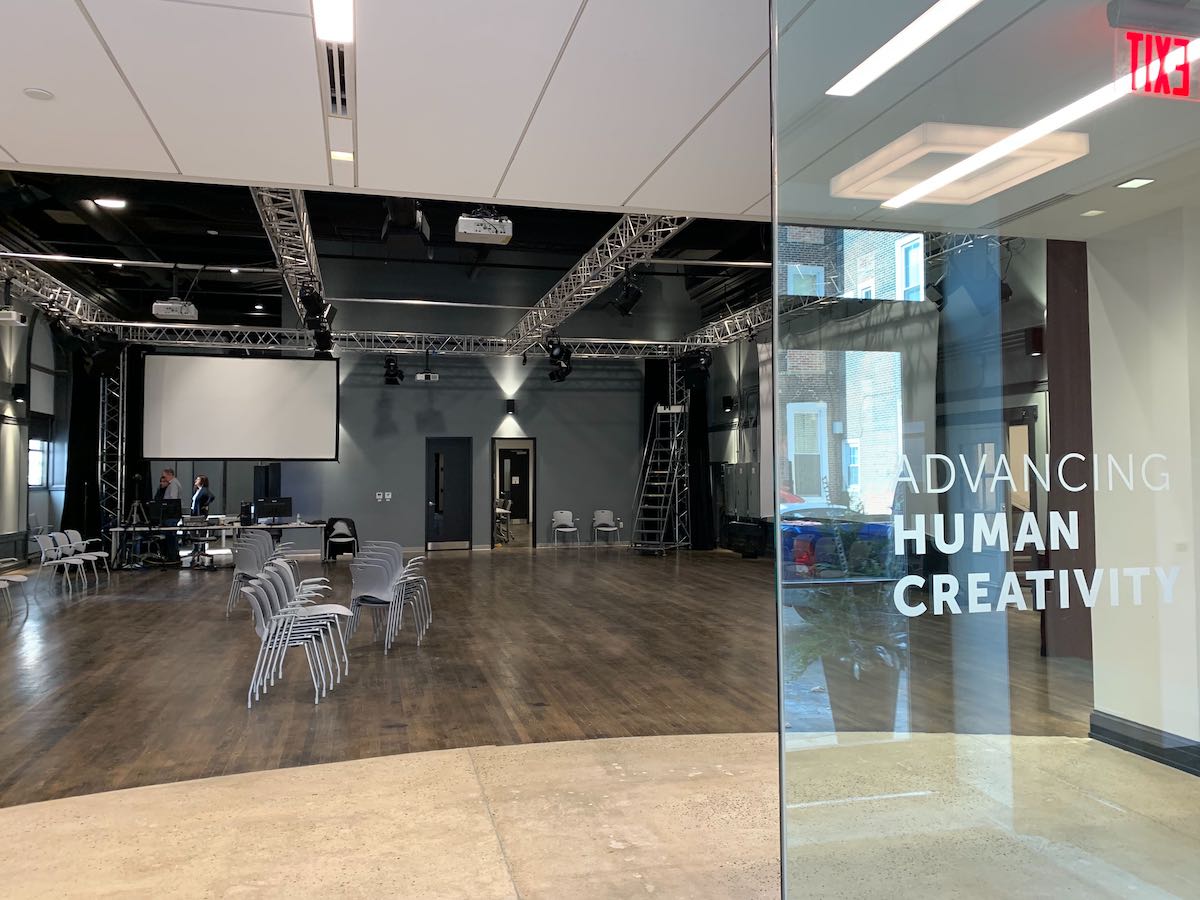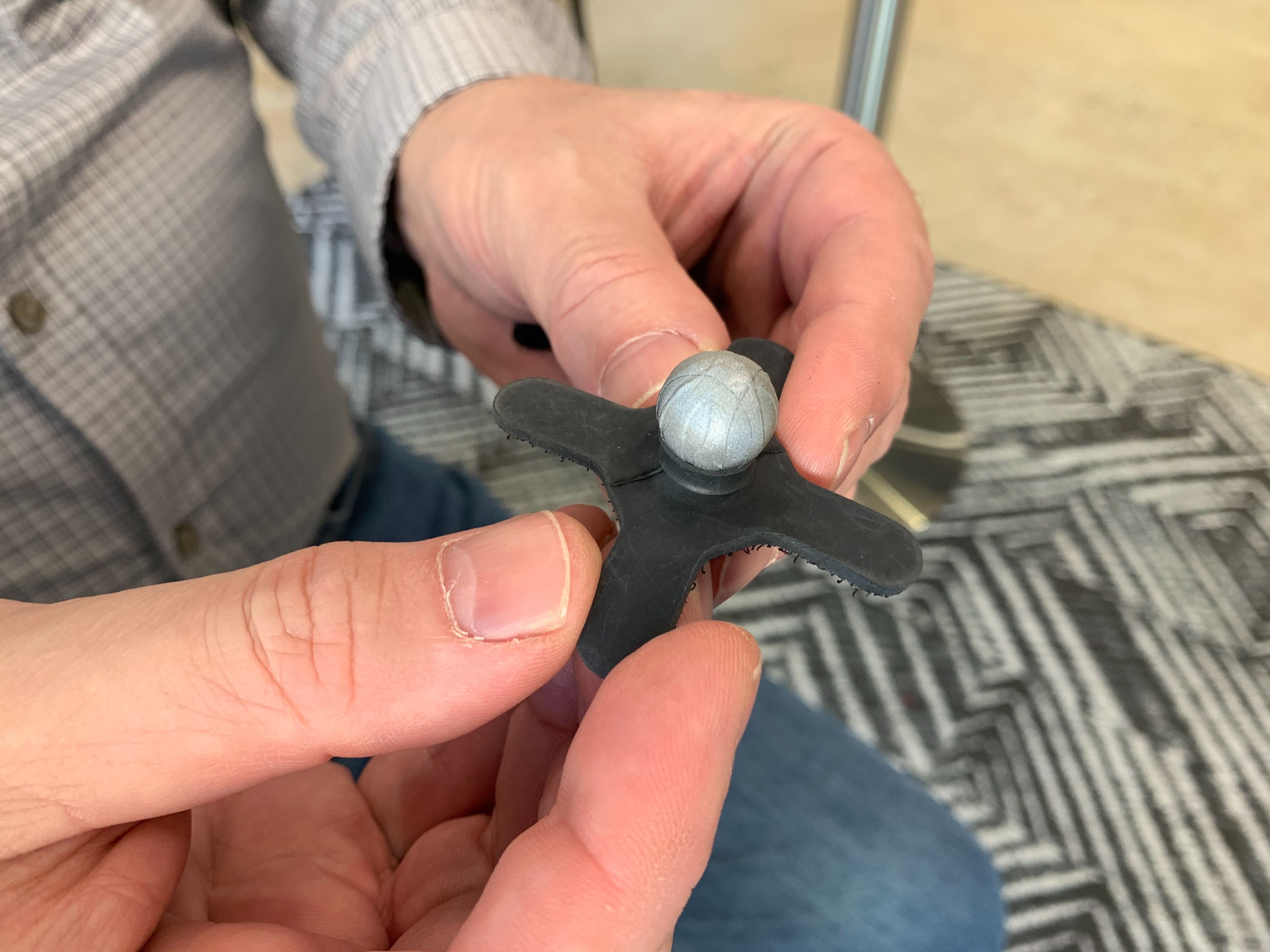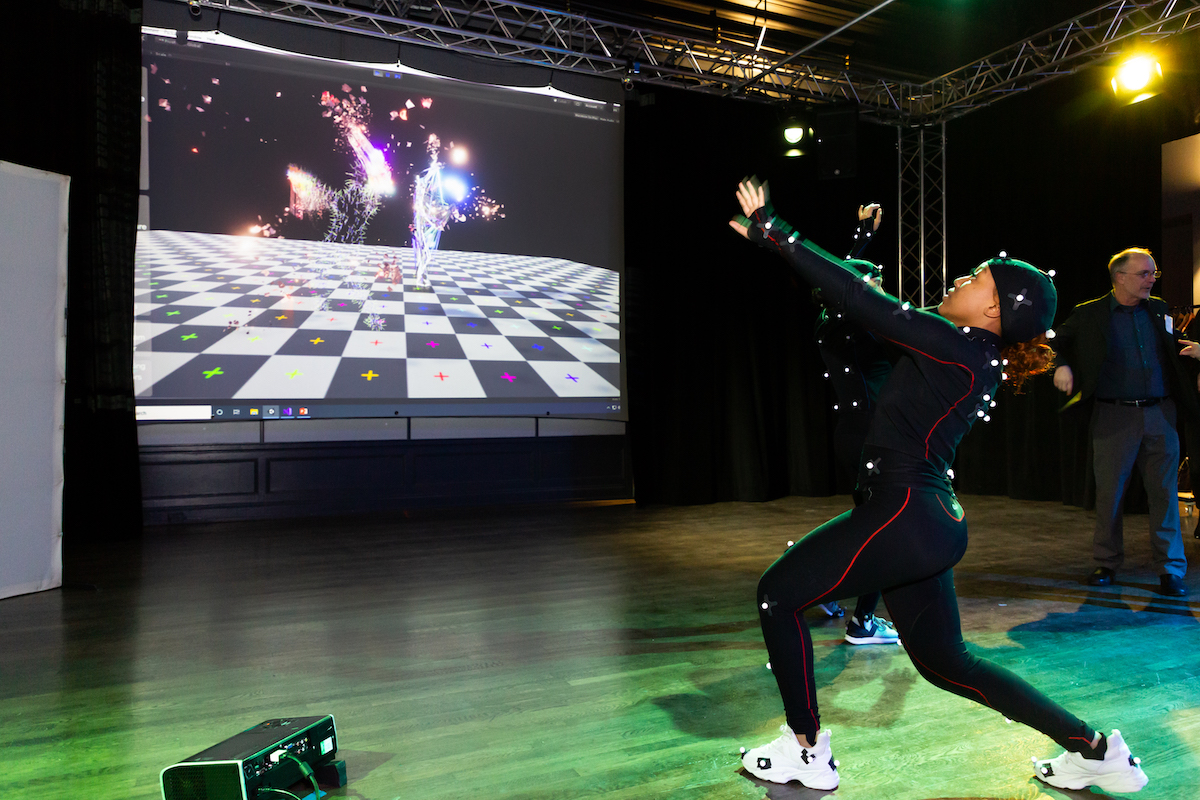The University of the Arts in Center City just opened a 5,600-square-foot research center for artists to experiment with technology in their work.
The Center for Immersive Media, in UArts’ Juniper Hall near 13th and Spruce streets is all about content, creativity, innovation “and how we leverage state-of-the-art technology,” the school said.
The facility explores the fields of virtual and mixed reality, audio, performance motion-capture and human-computer interaction through collaboration across the arts, science and medicine industries.
When you first walk into the Center, it looks similarly to any small theater across the city:

The entrance of the Center for Immersive Media. (Photo by Paige Gross)
But its purpose, UArts President and CEO David Yager said, is for it to be “highly customizable” for any number of projects students or faculty might want to stage in the space.
On closer inspection, you can see that the tech rigging hanging from the ceiling also holds 12 motion capture cameras, that work simultaneously with sensors and VR technology so users can both capture the motion and impose another reality onto it.

Motion capture cameras at the Center for Immersive Media. (Photo by Paige Gross)
An adjacent room is also currently set up for an audio instillation called “Ruminate,” where artists John Paul Beattie and Anna Ready set up a “sonic landscape.”
The center is meant to serve as a place for UArts faculty, staff and the professional community to adopt and train on the most up-to-date technologies. Three classes will be hosted in the space next semester, across various disciplines.
Beattie will be teaching a class on spacial audio composition, professor Erik Van Horn will teach a class on art making with VR, and visiting artist Miwa Matreyek will teach a projection, body and storytelling course.
The idea for the center has been circulating for a few years, Yager said, but physical work on it began last spring. Its previous life was as a theater scene shop, but “it felt like an underutilized space,” he said.
The director of the space, Alan Price, joined UArts earlier this year from The Ohio State University, and was integral to the development of the center, the school said. Price came to UArts with a National Health Institute funded research grant for developing a virtual reality training simulator for first responders in mass casualty incidents.

Price holds a motion sensor. (Photo by Paige Gross)
Price said that before he arrived at the university, there had been a committee of people sharing their interests for the space. Many were interested in how motion capture technology could be used across departments.
With the Center’s large, open performance space, it’s the perfect way to explore that technology, Price said.
Any one of UArts’ about 1,800 students and 450 faculty will have a chance use the space: “Eventually we’ll have projects we’ll invite students to bid for, some paid work, some internship or work study work,” Yager said.
And with a residence hall directly above the Center’s two floors, Yager said he’s hoping that eventually students will self-select the living space because of its proximity to the space.
“For me, it’s sort of big-picture piece — how do we engage in education, research and collaboration, and how do we create a space that’s not identified with any one discipline, but is open for discovery by students, faculty and staff?”
Before you go...
Please consider supporting Technical.ly to keep our independent journalism strong. Unlike most business-focused media outlets, we don’t have a paywall. Instead, we count on your personal and organizational support.
Join our growing Slack community
Join 5,000 tech professionals and entrepreneurs in our community Slack today!





